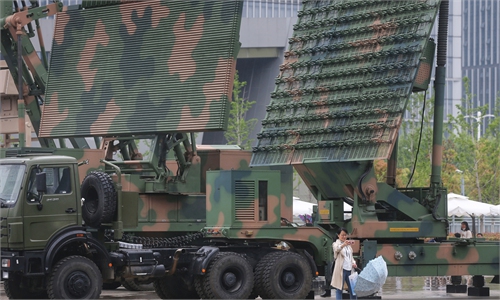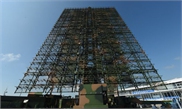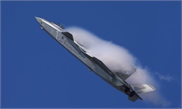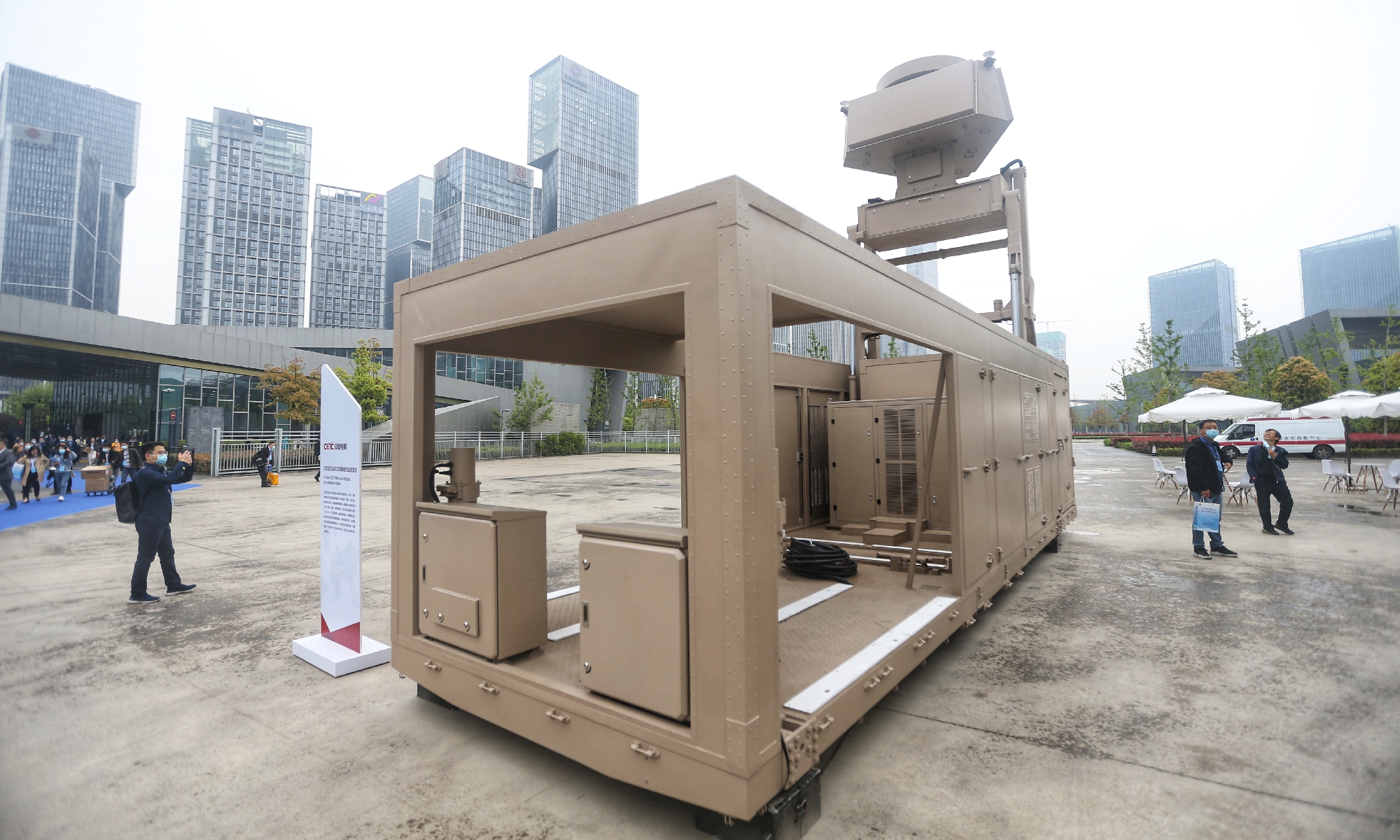
An S-band 3D TWA low-altitude surveillance radar developed by China Electronics Technology Group Co is on display at the 9th World Radar Expo in Nanjing, East China's Jiangsu Province on April 23, 2021. Photo: Cui Meng/GT
With aerial drones becoming an increasing threat to both traditional and non-traditional security fields, China has developed a series of countermeasures. Some of these new technologies are on display at an ongoing radar show.
Developed by the No.14 Research Institute of the state-owned China Electronics Technology Group Corporation (CETC), the YLC-48 portable multipurpose reconnaissance radar is one of the star products exhibited at the 9th World Radar Expo. The event is being held from Thursday to Saturday in Nanjing, capital of East China's Jiangsu Province.
The YLC-48 is characterized by its small size, as it can be carried by a single soldier, making it very different from other radar systems of similar functionalities. And it's China's first portable phased array radar, the Global Times learned on Friday from the No.14 Research Institute at the expo.
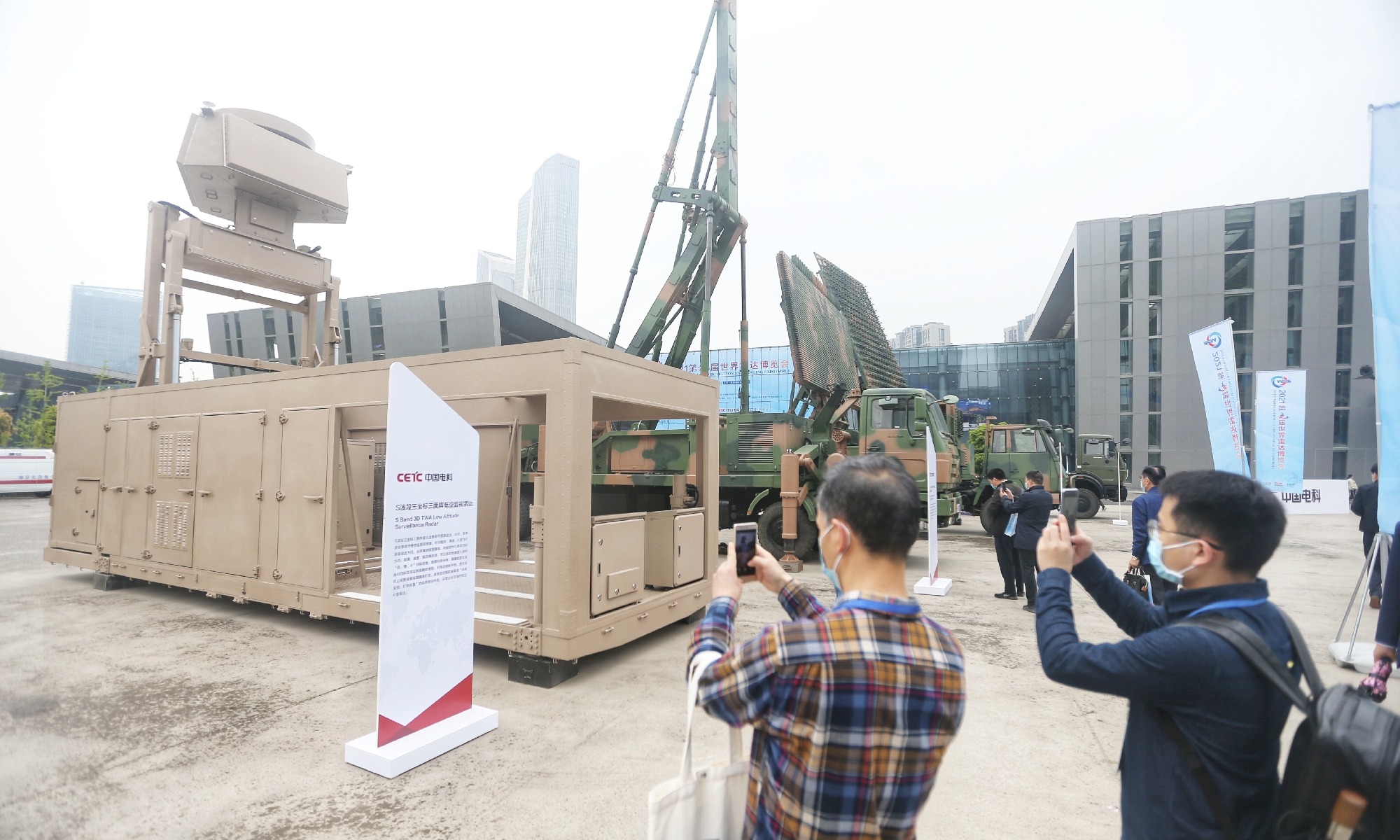
An S-band 3D TWA low-altitude surveillance radar developed by China Electronics Technology Group Co is on display at the 9th World Radar Expo in Nanjing, East China's Jiangsu Province on April 23, 2021. Photo: Cui Meng/GT
Dubbed the "terminator of drones," this radar has an good ability to detect low-altitude, small and slow targets despite strong noise waves close to the ground. And it can effectively detect and track incoming targets from any angle, its developer said.
According to a statement the No.14 Research Institute sent to the Global Times, the YLC-48 uses a large number of digital integrated circuits, and it can be mounted on all kinds of lightweight weapons platforms, can conduct missions under all-weather conditions, and can be rapidly deployed and withdrawn.
The No.14 Research Institute has also developed the AUDS high-mobile anti-drone system based on the YLC-48. This system can greatly enhance China's public safety and low-altitude security defense capabilities in sensitive regions, the institute said.
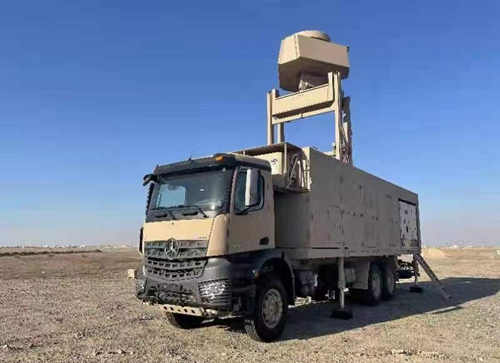
The S-band 3D TWA low-altitude surveillance radar developed by the No.38 Research Institute of CETC. Photo: Courtesy of CETC
Another anti-drone radar system, making its first public appearance at the expo, is the S-band 3D TWA low-altitude surveillance radar developed by the No.38 Research Institute of CETC.
This radar system can simultaneously detect and track targets including low-flying cruise missiles, warplanes and small drones; it can provide information including distances, locations, heights, speeds and directions, CETC said in a statement sent to the Global Times.
It will be deployed in key locations like cities, nuclear plants and military facilities, its developer said.
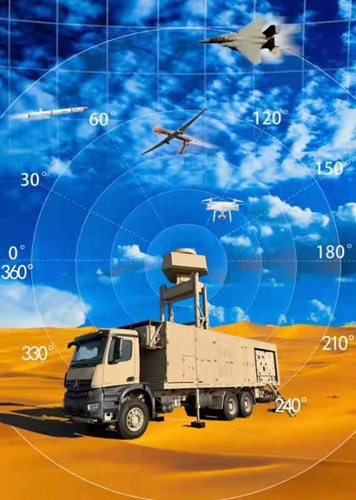
The S-band 3D TWA low-altitude surveillance radar developed by the No.38 Research Institute of CETC. Photo: Courtesy of CETC
Over the past few years, drones have been getting more civilian and military applications. But mostly, their usage is unauthorized and not monitored, making them a great potential aerial threat, analysts said.
Low-altitude, small and slow targets like drones poses many threats to air defense, as they have become some of the major killing weapons in real combat, Hu Mingchun, director of the No.-14 Research Institute, told the Global Times in an exclusive interview on the sidelines of the expo on Thursday.
As drones have also become easily accessible to normal people, incidents involving unauthorized flying of drones are also becoming frequent, Hu said. "That is why we are bringing radar systems specially designed to deal with low-altitude, small and slow targets."
Detecting drones is difficult because of their small size and also because they often fly low. Noise waves from the ground often disrupts radar signals, said Zuo Qunsheng, chairman of China Radar Industry Association.
But the Chinese radar industry has done a lot of work and already dealt with many problems well, Zuo said.


